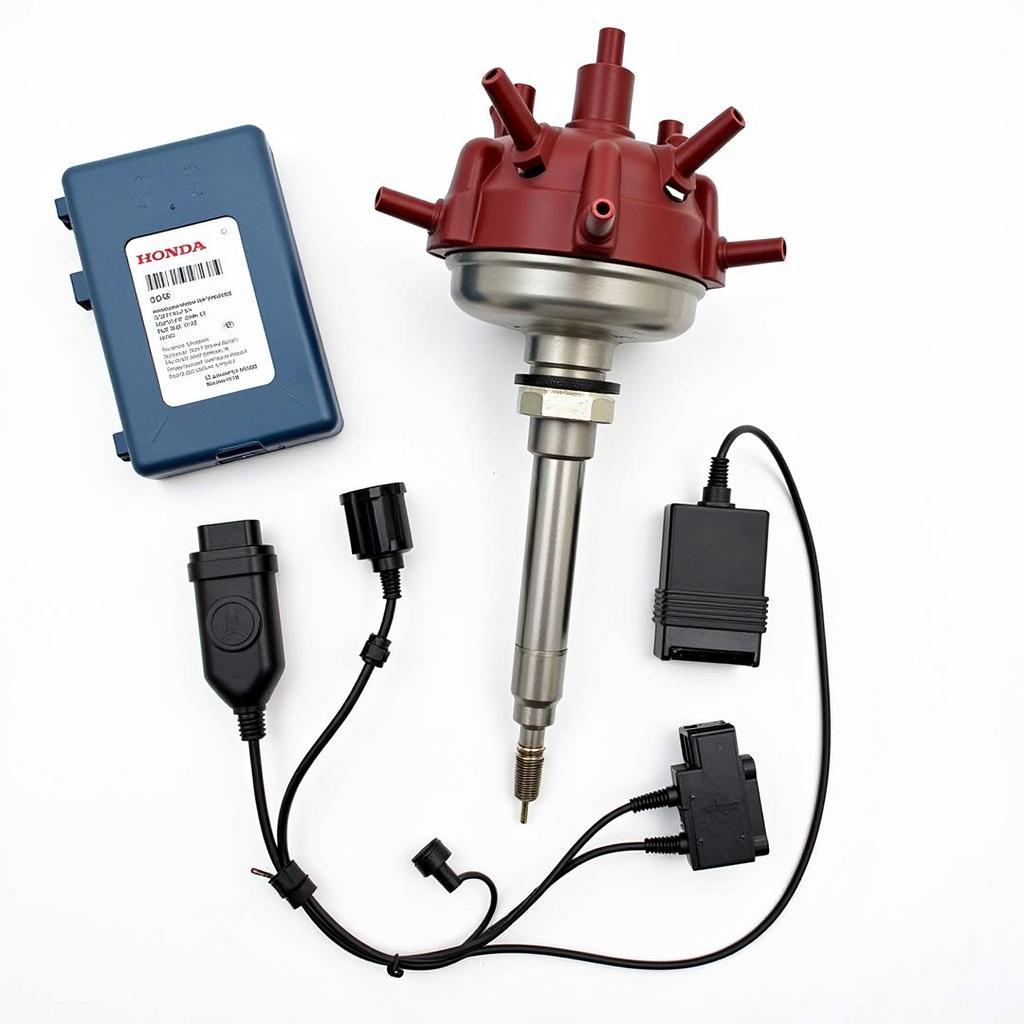Swapping a newer engine into your older Honda? You might be facing an “OBD2 to OBD1” situation, especially with the popular B series engine. This means converting your engine’s electronic control system from the newer OBD2 standard to the older OBD1. While this might sound daunting, it’s a common modification that opens doors to simpler tuning and wider part compatibility for your Honda. This article guides you through the process, benefits, and things to consider for a successful OBD2 to OBD1 conversion.
Understanding OBD2 and OBD1 in Honda B Series Engines
Before diving into the conversion, let’s clarify what OBD1 and OBD2 are and why they matter.
OBD (On-Board Diagnostics) is a standardized system that monitors your car’s emissions and performance. It uses sensors to collect data and alerts you through those pesky dashboard warning lights if something’s amiss.
OBD1, introduced in the late 1980s, was Honda’s first foray into onboard diagnostics. It’s known for its simpler technology and limited diagnostic capabilities.
OBD2, introduced in the mid-1990s, brought more sophisticated monitoring and standardized diagnostic connectors. It offers more detailed data and troubleshooting codes.
For Honda enthusiasts, OBD1 often translates to easier DIY tuning and access to a wider range of aftermarket performance parts.
Why Convert Your Honda B Series from OBD2 to OBD1?
There are several reasons why you might choose to convert your B series engine from OBD2 to OBD1:
- Simplified Tuning: OBD1 systems are often favored for their straightforward tuning process. You can use simpler methods like chipped ECUs (Engine Control Units), which are easier to modify for performance gains.
- Wider Aftermarket Support: The aftermarket world embraces OBD1. You’ll find a broader selection of performance parts like intake manifolds, headers, and camshafts designed explicitly for OBD1 setups.
- Cost-effectiveness: In some cases, converting to OBD1 can be more budget-friendly, especially if you’re already considering aftermarket engine management.
What’s Involved in an OBD2 to OBD1 Conversion?
A successful conversion requires several key components:
- OBD1 ECU: The brain of the operation. You’ll need an OBD1 ECU compatible with your specific B series engine.
- OBD1 Distributor: This vital component manages ignition timing. Choose an OBD1 distributor designed for your engine.
- Conversion Harness: This wiring harness bridges the gap between your car’s existing wiring and the OBD1 ECU and distributor.
- Sensors and Components: Depending on your setup, you might need additional sensors compatible with the OBD1 system, such as a throttle position sensor (TPS) or intake air temperature sensor (IAT).
The Conversion Process: A Step-by-Step Overview
- Gathering Parts: Source all the necessary components, ensuring compatibility with your specific B series engine code.
- Preparation: Disconnect the battery and remove any components obstructing access to the ECU and distributor.
- ECU and Distributor Swap: Replace the OBD2 ECU and distributor with their OBD1 counterparts.
- Harness Installation: Connect the conversion harness, ensuring proper connections between the ECU, distributor, and engine sensors.
- Sensor Installation: Install any additional required sensors.
- Double-Checking Connections: Before reconnecting the battery, meticulously verify all connections to avoid potential issues.
- Initial Startup: Reconnect the battery and turn the ignition to the “on” position without starting the engine. Listen for the fuel pump priming and allow the ECU to recognize the new setup.
- Starting and Tuning: Start the engine and check for any error codes. Initial tuning might be needed to optimize performance.
Important Considerations and Potential Challenges
- Emissions Regulations: Be aware of emissions regulations in your area. OBD1 vehicles might not meet current standards.
- Finding a Reputable Tuner: If you’re not comfortable with DIY tuning, seek a reputable tuner experienced with OBD1 Hondas.
- Troubleshooting: Be prepared for potential hiccups. Familiarize yourself with common OBD1 error codes and troubleshooting procedures.
Conclusion
Converting your Honda B series engine from OBD2 to OBD1 can be a rewarding endeavor, opening up opportunities for simplified tuning and a broader range of performance parts. However, approach this modification with careful planning, research, and attention to detail. Ensure you have the correct components and a solid understanding of the process before getting started.


